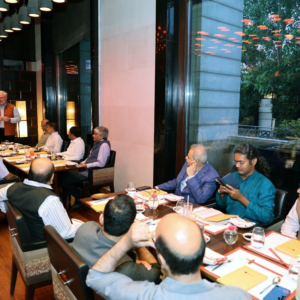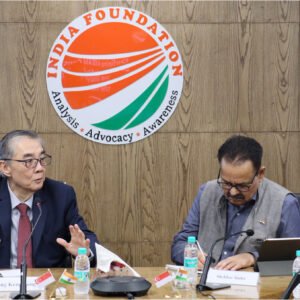We have been hearing about India’s developing debt crisis for a while now. News reports also listed top defaulters.
Insolvency or Bankruptcy are terms which are usually used interchangeably for a situation of a person or a corporate when they are unable to repay their debts. Bankruptcy is the legal adjudication of Insolvency which is a factual scenario. Insolvency can occur due to a set of factors which include, slowdown of the cash flow, poorly managed cash system, increase in cash expenditures, etc. The reasons for insolvency are important, as the specific rights are allowed for the creditor to be exercised against the entity which is insolvent in any legal system.
The Indian insolvency law recently went through an overhaul with the government notifying most of the provisions of the new Insolvency and Bankruptcy Code (IBC) earlier this year. The Indian Law is one of the better drafted legislations if we compare it globally and has borrowed best practices from both UK and the USA. The new Law was passed, enacted and notified at a break neck speed.
Last month Reserve Bank of India was armed with a set of powers by the Government to identify and initiate proceedings, through the respective banks, against defaulters under the Code. These powers flow through an amendment to the Banking Regulation Act, which adds Sections 35AA and 35AB to the Act.
Though any set of Insolvency laws in any jurisdiction are not a debt recovery tool per se but they certainly play an important role in promoting credit discipline at large. India’s debt problem is concentrated to a few entities as has been pointed out by the RBI. As per the RBI only 12 NPA accounts account for 25% of the total NPAs by volume. The gross bad debt of the Indian banking system as of March, was at Rs 7.11 lakh crore, which means the 12 accounts would be responsible for about Rs 1.78 lakh crore.Recently the Finance Minister, Arun Jaitely remarked that the whole NPA problem is only limited 20-30 accounts and is not spread to large number of accounts.
The RBI will in all probability recommend the respective commercial banks to initiate proceedings under the IBC against these 12 accounts. This move has drawn an international applause, including a praise from the international credit rating agency Moody’s too.
This is a valid point considering the proceedings under the code can’t go beyond 180 days which are stretchable upto 270 days at the most. Time is of essence for the resolution of this problem because the debt is growing day by day. There is a counter argument to this, that the time limit may actually force the corporate into liquidation. This is a very flawed argument. Insolvency is not necessarily the worst outcome in the current situation and in fact it is probably the best solution. The corporates which we are dealing with here, most probably have already been subject to multiple restructuring through various schemes of RBI like Strategic debt restructuring, S4A, 5/25 etc. Hence, insolvency under the IBC is not that bad afterall, since the banks and the creditors will atleast be able to recover a part of their credit. This will certainly help them improve their asset quality which is under tremendous amount of stress right now.
Had there been no IBC, the resolution of each case would atleast take 4 years, which has been India’s average of resolving Insolvency in the recent past.
Given the knowledge of the cancer of debt, surgery shouldn’t be a problem if we are prepared to take bold decisions. All top 20-30 accounts in fact can be subjected to IBC proceedings. Even if they result in a 40% of haircut by the banks on an average, 60% of the money gets back to the banks which can be used for their recapitalisation.
If we start now with the resolution of the first 12 accounts, as recommended by the RBI, the judicial proceedings can be done within a year and the rest 10-15 accounts or so in the next year. The amendment in the Banking Regulation Act is very critical here. The creditors, which being the banks, anyways don’t need a sanction or a permission from the RBI to initiate proceedings under IBC, as per its provisions. What happens in practical situations is that the defaulter is a person who is politically connected and pressurizes the bank administration to not proceed and usually succeeds in doing it. Now after the amendment it is the RBI can be authorized by the Central Government to direct the banks to initiate proceedings under the IBC. This way the bank administration can escape any political pressure which is usually the problem.
Due to a small number of NPA accounts accounting for the major NPA by volume, our debt problem is still a problem only and not a crisis. For the sake of comparison, the sub-prime crises in the USA, involved a large number of accounts and hence became unmanageable and ultimately resulted in global recession. India’s debt problem therefore can be effectively resolved or at least contained by effective implementation of the IBC. The priority here should be saving the banks and an impending debt crises and not saving a few corporates.
(Raghav Pandey is a Research Scholar at School of Humanities, IIT, Mumbai.)



